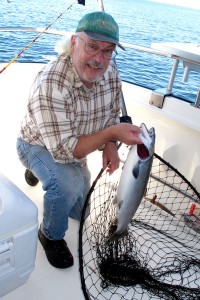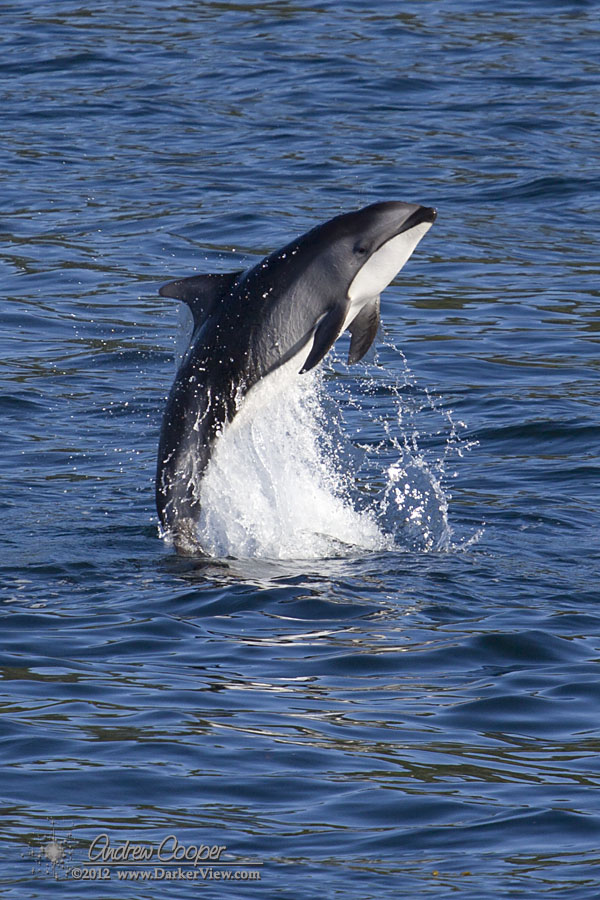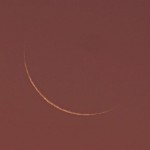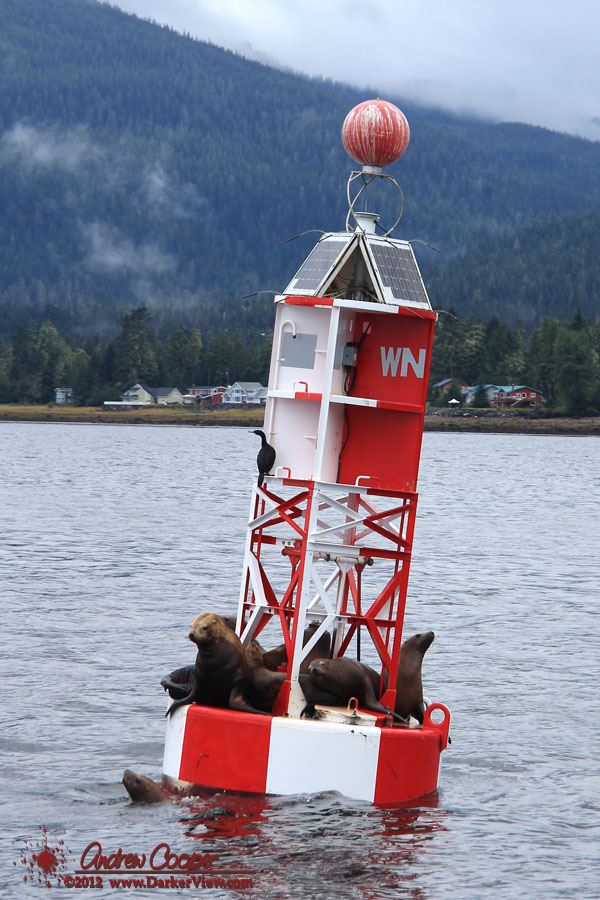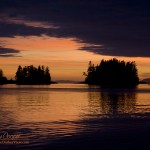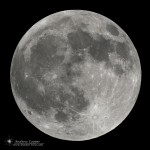Welcome
Blogroll
Legal Matters
All text, photographic and drawn material is the original work of the indicated authors, material is used by permission. Material is copyrighted by their respective authors, all rights reserved.
If you believe that any material here infringes, please contact the webmaster to address the issue.
Please keep comments respectful and avoid profanity or personal attacks. We reserve the right to delete any comments we feel are inappropriate.
Feel free to link to NordicQuest.com. We are selective in our outgoing links. Requests for commercial links or link exchanges are usually ignored.
Late Season Salmon Fishing
September is fairly late in the season for Southeast Alaska, but that does not mean that the month is a poor choice for cruising and fishing. The late summer weather is often quite nice. The fishing? That can be pretty good as well.
Into September the king salmon have long ago spawn, and even the pinks have pretty much headed up the creek.. The silvers (also called coho) are still spawning, making the first weeks of September an angler’s thrill. The silvers are big too, having spent the summer fattening on baitfish in the open sounds and channels. Fifteen pound fish can be common if you pick the right place.
With the pink salmon runs waning, the ratio of fish caught can be favorable. Earlier in the summer it is typical to catch two or more pinks for every silver caught, late in the season this can switch… You might catch one or two pinks while limiting out on the more desirable silvers. As the fish are headed for the spawning grounds you need to fish further inside, closer to the rivers and streams.
This summer we hit silvers nicely in the first week of September, two excellent days of fishing around Ketchikan. One morning of trolling from Tatoosh Island to Clover Pass saw us land fifteen silvers and two pink salmon. All big pretty fish that dressed out well, filling the freezers for the trip south. We were not alone, we counted seventy boats out on a pretty Saturday morning, from skiffs to cruisers. The boats around us were mostly locals, folks that obviously knew where and when to catch the best fish.
Posted in Fishing, Fishing Holes
Tagged coho, fishing, Ketchikan, late season, September, silvers
Leave a comment
Tracking the Aurora Borealis
As our Sun continues through the current solar maximum we should have plenty of opportunities to view one of the most sublime of all natural spectacles, the Aurora Borealis.
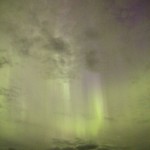
Aurorae over St. John’s Harbor on September 4, 2012 from a massive CME ejected from the sun on August 31
Solar Activity
Solar activity waxes and wanes in an eleven year cycle. When active there are increased numbers of sunspots and solar flares. It is this activity that can have such a dramatic effect here on Earth. A strong solar flare can be accompanied by a release of enormous quantities of material from the Sun. Called a coronal mass ejection (CME) this material streams outwards from the Sun. If the Earth happens to be in the path this material will strike the Earth’s magnetic field, causing the field to distort and reverberate with the impact. Charged particles are channeled into the atmosphere along the magnetic field to create a glowing spectacle.
Our current solar maximum should run through 2013 and into 2014 providing excellent auroral viewing conditions for the next year or two.
Video of the August 31, 2012 CME from various solar monitoring spacecraft
Viewers in the western hemisphere have an advantage, as the Earth’s magnetic pole is not located at the geographic pole. Since the pole is offset to the west, located in northern Canada, the auroral circle also tilts to the west. This allows western hemisphere viewers at lower latitudes to enjoy the aurora more easily than viewers across the eastern hemisphere, including northern Europe and Russia.
Getting Informed
There a several ways to get updates on current solar activity and the related activity in the Earth’s magnetic field. In this connected age you can get near real time warnings of CME’s and geomagnetic storms, you can know when to step outside and look up for the show.
The information is available on several good websites, my favorite is SpaceWeather.com for general information and reports of current activity. Down the left side of the main page you can find current data on solar activity, sunspots, recent flares and the corresponding level of activity in the Earth’s magnetic field. There are also photos and reports of current activity, including often stunning photography contributed by readers around the world. A menu at the top allows you to step back to past reports by date.
Another good site is the NOAA/NWS Space Weather Prediction Center. This site also provides current conditions gathered from a number if different sources, both ground and space based.For immediate alerts there is a smart phone application from the NASA Heliophysics Division called 3D Sun. Available for both Android and iOS. This is my primary method of getting alerts to interesting solar conditions. The application can be set to receive push alerts that pop up, a quick reminder to look for aurora.
When looking at the reports there is a simple number that indicates current activity in our magnetic field. Called the K-index, this is an auroral strength measurement that ranges from zero to nine and is tied to a specific geographic location. Kp, the planetary K-index, is a averaged value from a number of stations giving a more general indication of auroral strength. A low Kp, zero to three indicates fairly calm conditions. It is when the Kp climbs above four that aurora watchers take note. The strong storm mentioned above, with aurora seen in the central United States featured a peak Kp of seven.
Armed with a little knowledge and a real time source for current conditions, you can be forewarned and ready to observe the aurora. This might mean the difference between catching the show, or accidentally sleeping through it.
Posted in Astronomy & Sky Events, Travel Hints
Tagged arora, borealis, geomagnetic, northern lights
Leave a comment
New Moon
Inside Passage
It took 3 hours to fly to Juneau, it took 18 days to get back.
The video is done. Shot with a Canon 60D, a Canon G11 and an iPad, the video documents the voyage from Juneau to Anacortes I took last month. Bears, whales, dolphins, and a whole lot of water. It was a great trip, I can only hope I convey a little of the experience in the video.
Compressing 1,800+ photos and dozens of video clips to three minutes is an interesting exercise. This is compounded by the thousands of timelapse exposures that needed to be assembled. It went surprisingly quickly this time, a mere three evenings of work. (As long as you classify evening as getting to bed before 2am.) Either I am getting better with the tools, or I just got lucky when it came to fitting the thing together.
I have produced several videos about these voyages by boat through the wilds of the Pacific Northwest. How do you keep each video from looking just like the last? This time I changed it up stylistically, opting for a much more driving soundtrack coupled with the frenetic pace of timelapse.
Does it work? I will await your judgement.
Inside Passage from Andrew Cooper on Vimeo.
Posted in Alaska, British Columbia, Cruising, Photography
Tagged Anacortes, bear, dolphin, inside passage, Juneau, orca, video, whale
Leave a comment
Aurora Borealis
This trip to Alaska offered an opportunity that I had not experienced on previous trips due to the confluence of two conditions… I would be visiting later in the year than usual, it would actually get properly dark. When visiting Southeast Alaska in June and July the amount of darkness is dramatically limited by long summer days. The second condition is even less easily arranged… Our Sun is near the peak of its eleven year solar cycle. This results in more solar activity including large sunspots and energetic solar flares.
Put the two of these factors together and there is a good possibility of seeing the Aurora Borealis.
It is only a possibility, not a certainty by any measure… This was not a trip to the far north, where the auroral circle usual sits. If one were to travel north of Fairbanks into the true arctic one is almost guaranteed to see the aurora during solar max. I would be traveling between Juneau and Anacortes, from 58 to 48 degrees north latitude. At these latitudes it would take a strong geomagnetic storm to bring the aurora south into view. The chances of such a strong storm were relatively good, we are currently experiencing an active Sun near solar maximum, averaging a decent storm every month or two. In any case the odds were a bit better than seeing the aurora at home in Hawai’i.
At least there would be no light pollution to deal with, significant outposts of civilization are sparse along the route we would be traveling. One complication would be weather… Of the twenty days I would spend in northerly latitudes, about half were clouded over, thus the odds of seeing a good auroral display were modest, maybe even unlikely.
We got lucky.
It was at a place called St. Johns Harbor, a pleasant cove located between Petersburg and Wrangell at 56 degrees latitude. After anchoring for the night, dropping the crab pots and enjoying a beautiful sunset we were about to turn in for the night. It was Doug who noticed an odd ray of light in the sky.
I was not quite sure what we were seeing, a steady, straight line of light glowing high in the west. A high altitude cloud or contrail catching a little twilight glow? It was not yet full dark and high altitude illumination from the Sun was a possibility. Switching off all the external lights on the boat did not provide any better view or answers.
As we watched the darkening sky ever more was visible, slowly patches and curtains of light appeared. As it moved across the sky there was no question as to what we were witnessing.

Aurorae over St. John’s Harbor on September 4, 2012 from a massive CME ejected from the sun on August 31
The view was hampered by a thin layer of clouds. There was cirrus and a few more substantial puffs of nimbus silhouetted against the glowing sky. Bunks and warm cabins forgotten, we watched for over an hour as the display waxed and waned. From the top deck of the boat we had a 360° view, a good thing as the whole sky was involved at times. Eventually a bright moon rose in the eastern sky, the moonlight combining with the clouds to drown out the more ephemeral northern lights.
I did record the display, I set up the tripod atop the boat and took quite a few photos. The camera showed most of the glow as bright green, with a background of violet. With the boat slowly swinging at anchor I was unable to use the longer exposures I would have preferred. Two or three seconds was the limit, anything longer was badly blurred by the motion. I had to turn up the camera gain to compensate, resulting in somewhat grainy photos.
Later, when we again had internet connectivity I looked up the solar conditions to discover what had happened. A large coronal mass ejection had been ejected from the Sun several days earlier on August 31st resulting in a strong geomagnetic storm. Good auroral displays had been reported across the high northern and southern hemispheres.
As we had been out of contact, there had been no alert for us, it had found us by surprise, a very pleasant surprise.
Check out the video below for a nice view of the solar flare that produced this particular geomagnetic storm. A dramatic show on the Sun that produced a dramatic effect when it reached our planet…
Full Moon
Full Moon will occur today at 19:19ADT.
Photo of the Week – Good Company
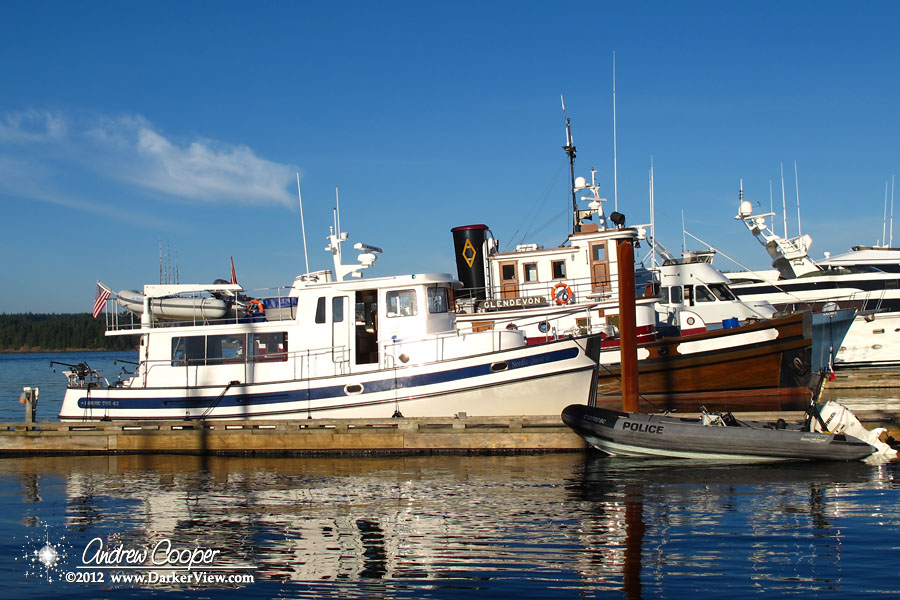
The Nordic Quest moored next to the Glendevon, a restored tugboat at Campbell River


